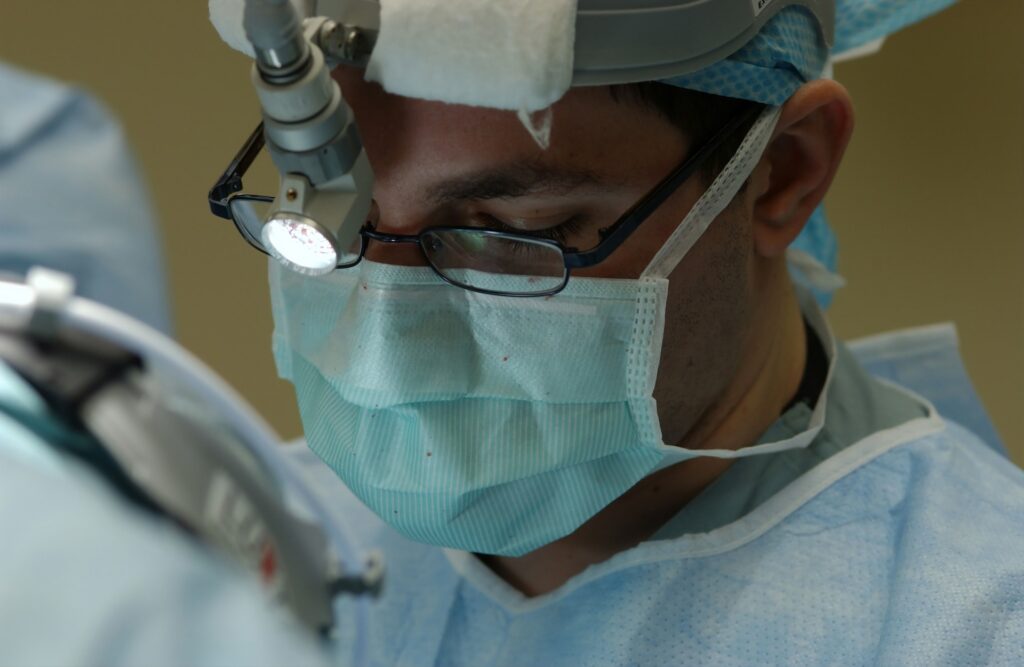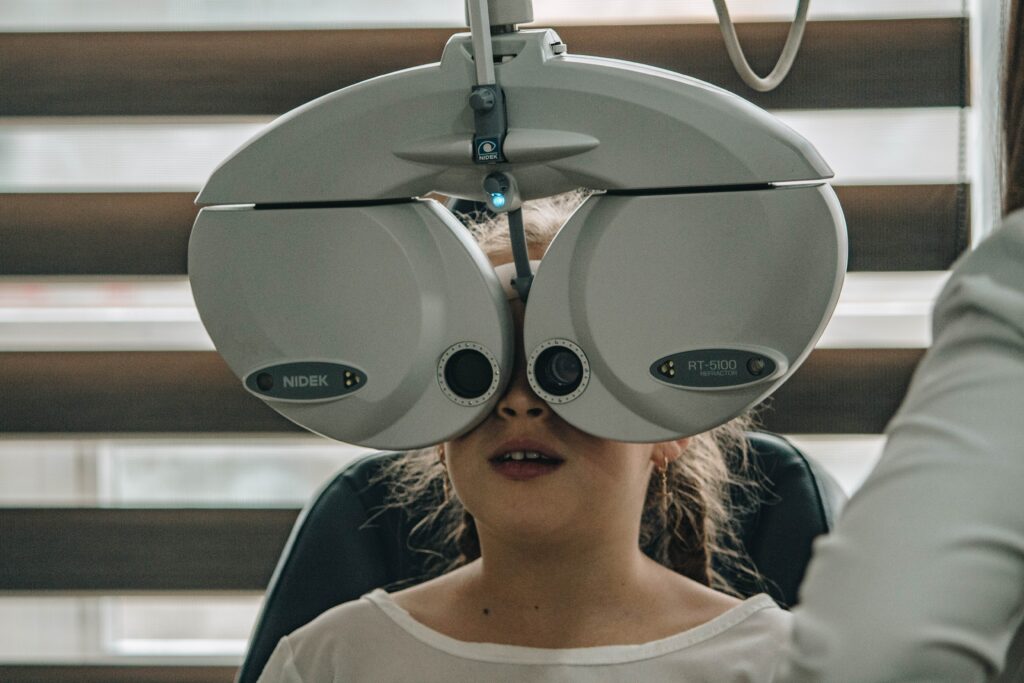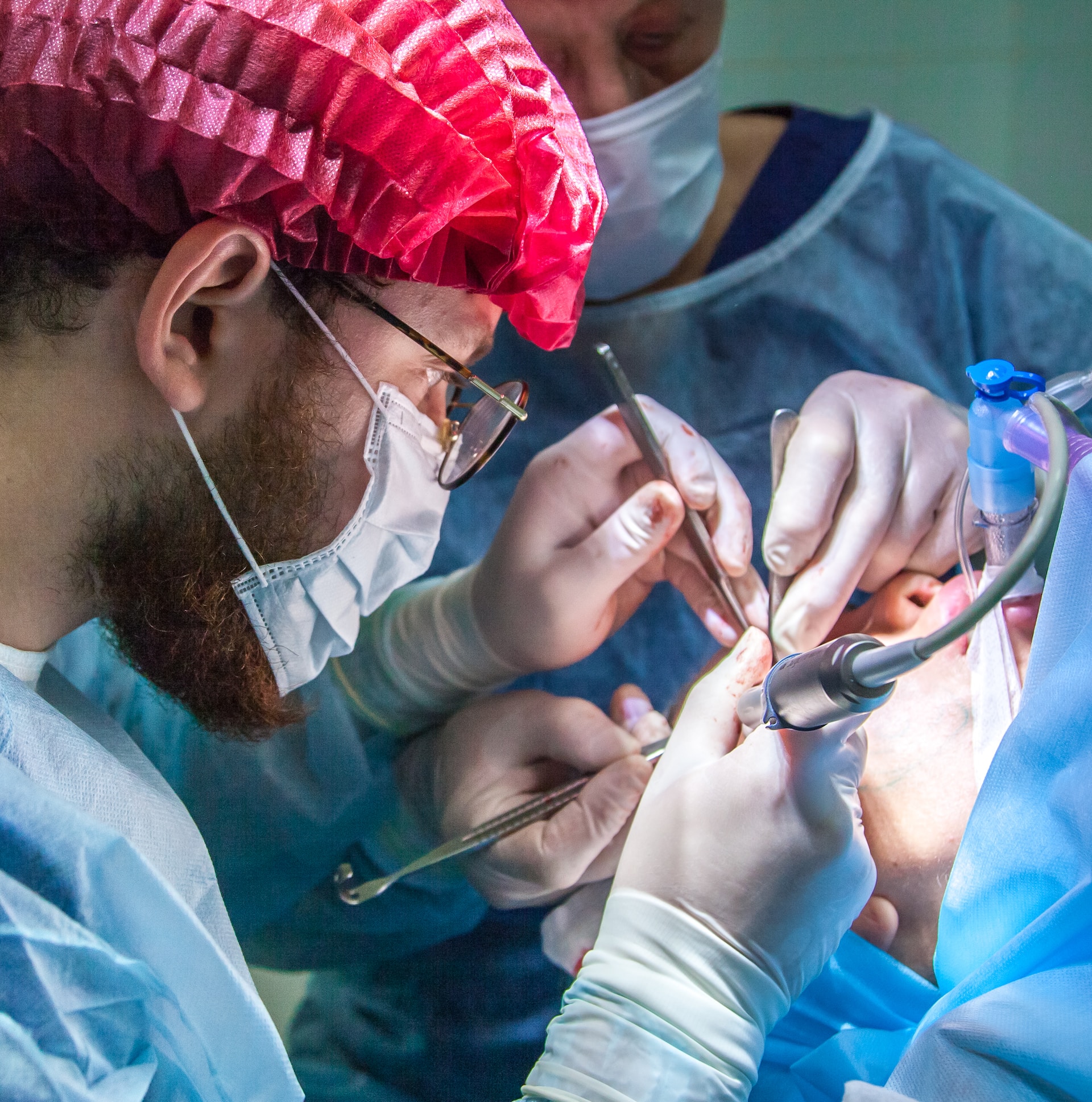The Difference in Vision Correction Surgeries: LASIK, PRK, and Lens Replacement Surgery
In modern society, clear vision is of paramount importance to our lives. However, vision problems such as myopia, hyperopia, astigmatism, and presbyopia often plague us, forcing us to rely on glasses or contact lenses to see the world clearly. Fortunately, one of the remarkable achievements of modern medicine is vision correction surgery, which has brought new hope to millions of people, enabling them to break free from this dependence and enjoy a clear view.
However, deciding whether to undergo vision correction surgery is a significant decision that requires careful consideration. You may have heard of different types of vision correction surgeries like LASIK, PRK, and lens replacement surgery, but understanding the differences between them is crucial in making an informed choice. In this article, we will provide you with a detailed introduction to these three common vision correction surgeries, helping you better understand their principles, advantages, risks, and which surgery might be suitable for you.
Whether you are a potential candidate for vision correction surgery or simply interested in these procedures, this article aims to offer comprehensive information about LASIK, PRK, and lens replacement surgery, assisting you in making a wise decision about your vision’s future. Let’s delve into the mysteries of these surgeries together, with the hope of helping you attain a clearer and brighter world without the need for glasses or contact lenses.

Part One: LASIK Surgery
Introduction: Introducing the Concept and Popularity of LASIK Surgery
In today’s society, LASIK (Laser-Assisted In Situ Keratomileusis) is one of the most widely accepted and popular vision correction surgeries. It has transformed the lives of millions, allowing them to break free from the constraints of glasses or contact lenses and enjoy a clear vision. LASIK is a fast and effective procedure that utilizes laser technology to reshape the cornea, thereby correcting vision problems such as myopia, hyperopia, and astigmatism. In this section, we will delve into the principles, suitable candidates, pre-operative preparations, surgical procedure, post-operative care, as well as the advantages and risks associated with LASIK surgery, providing you with a comprehensive understanding of this exciting vision correction option.
Principles of LASIK Surgery
The core principle of LASIK surgery is to alter the shape of the eye’s cornea using laser technology, allowing light to properly focus on the retina, thus achieving clear vision. The surgery consists of two primary steps:
- Creating a Corneal Flap: The procedure begins with the surgeon using an instrument called a microkeratome to gently create a thin corneal flap. This flap acts like the cover of a book, which can be easily lifted to provide access for the subsequent laser reshaping.
- Laser Reshaping: Next, the surgeon employs a laser (typically either femtosecond or excimer laser) to precisely remove a portion of corneal tissue, altering its curvature to correct vision issues. This step usually takes only a few minutes, and the precision of the laser ensures outstanding predictability.
Suitable Candidates for LASIK Surgery
While LASIK is an excellent method of vision correction, it is not suitable for everyone. Here are some common criteria for suitable LASIK candidates:
- Stable Prescription: Patients should have a stable prescription for myopia, hyperopia, or astigmatism for a period of time. Typically, doctors recommend at least one to two years without significant changes.
- Age Factor: LASIK is generally not suitable for individuals too young, as their eyes may still be developing. It is generally recommended for those aged 18 and above.
- Corneal Thickness: The cornea needs to be thick enough to undergo LASIK surgery. The doctor will assess corneal thickness during the pre-operative evaluation.
- Absence of Serious Eye Conditions: Patients with eye conditions like corneal diseases or glaucoma are typically not suitable candidates for LASIK surgery.
Pre-operative Preparations
Before undergoing LASIK surgery, patients need to go through a series of pre-operative preparations to ensure the procedure’s safety and success. These preparations include:
- Eye Care Specialist Evaluation: Patients need to have a face-to-face consultation with a specialized eye care doctor. The doctor will conduct a thorough examination of the eyes, measure visual acuity, assess corneal curvature and thickness, and determine if the patient meets the surgical criteria.
- Discontinuing Contact Lenses: In the weeks leading up to the surgery, patients need to discontinue wearing rigid gas permeable contact lenses to allow the cornea to return to its normal shape.
- Detailed Consultation with the Doctor: Patients need to have a detailed discussion with the doctor about the surgical process, expected outcomes, and potential risks and complications. This helps patients make an informed decision.
- Avoiding Cosmetics and Skincare Products: For a period before the surgery, patients should avoid using cosmetics and skincare products to reduce the risk of infection after surgery.
The LASIK Surgery Procedure
LASIK surgery is typically performed under local anesthesia, with the patient remaining awake during the procedure. The surgery involves the following key steps:
- Creating a Corneal Flap: The doctor uses a microkeratome or femtosecond laser to gently create a thin corneal flap, similar to the cover of a book.
- Laser Reshaping: Subsequently, the doctor employs a laser (usually a femtosecond or excimer laser) to precisely remove a portion of corneal tissue, altering its curvature to correct vision issues.
- Flap Repositioning: Once the laser reshaping is completed, the doctor gently repositions the corneal flap without the need for sutures.
- Recovery Time: Patients can typically return home within hours after the surgery, and they begin to see clearly within a day or two, with no need for hospitalization.
LASIK surgery is an outstanding method of vision correction, but each patient’s situation is unique. Before considering LASIK surgery, patients should collaborate with a professional eye care doctor for detailed consultation and evaluation to ensure that surgery is the right choice for them. By following the doctor’s advice and post-operative care, patients can achieve rapid improvement in vision and enjoy a clear view. In the following sections, we will continue to explore PRK and lens replacement surgery to help you gain a better understanding of different vision correction options.

Part Two: PRK Surgery
Introduction: Introducing PRK Surgery as Another Common Vision Correction Procedure and Highlighting the Differences from LASIK Surgery
When discussing vision correction procedures, Photorefractive Keratectomy (PRK) stands out as an intriguing choice. Unlike LASIK surgery, PRK has unique characteristics and advantages, making it suitable for specific patients. In this section, we will delve into the principles, suitable candidates, pre-operative preparations, the surgical procedure, post-operative care, and a comparison with LASIK surgery to provide you with a better understanding of this vision correction option.
Principles of PRK Surgery
PRK surgery differs from LASIK surgery in its core principle, which involves reshaping the cornea’s curvature to improve vision using laser technology. Unlike LASIK, PRK does not require the creation of a corneal flap. Instead, it involves the complete removal of the corneal surface’s epithelial layer, followed by laser reshaping. Here are the key steps in PRK surgery:
- Epithelial Removal: At the beginning of the procedure, the surgeon gently removes the epithelial layer from the corneal surface, a process that usually takes a few minutes. Patients may experience some discomfort during this period, but there is no need to worry because the epithelial layer will regenerate after surgery.
- Laser Reshaping: Next, the surgeon employs a laser to remove a portion of the corneal tissue and reshape it to correct vision problems. Patients need to keep their eyes stable to ensure the precision of the laser.
Suitable Candidates for PRK Surgery
Unlike LASIK surgery, PRK is suitable for specific patients and is typically applicable under the following conditions:
- Thin Corneas: PRK surgery is safer for patients with thinner corneas because it does not require the creation of a corneal flap, reducing some surgical risks.
- Age Factor: PRK surgery usually has no age restrictions and is suitable for both young and older individuals.
- Stable Prescription: Like LASIK, PRK also requires patients to have a stable vision prescription.
- Absence of Serious Eye Conditions: Patients with certain eye conditions may be better suited for PRK surgery, as it has a smaller impact on the eyes.
Pre-operative Preparations
Before undergoing PRK surgery, patients need to go through a series of pre-operative preparations to ensure the procedure’s safety and success. These preparations are similar to those for LASIK surgery and include:
- Eye Care Specialist Evaluation: Patients need to undergo an evaluation by an eye care doctor to determine whether they meet the surgical criteria.
- Discontinuing Contact Lenses: In the weeks leading up to the surgery, patients need to stop wearing rigid gas permeable contact lenses to allow the corneal surface’s epithelial layer to return to normal.
- Detailed Consultation with the Doctor: Patients should have a detailed discussion with the doctor about the surgical process, expected outcomes, and potential risks and complications to make an informed decision.
The PRK Surgery Procedure
PRK surgery is typically performed under local anesthesia, with patients remaining awake during the procedure. Unlike LASIK, PRK surgery includes the following key steps:
- Epithelial Removal: The doctor uses special tools or a laser to remove the epithelial layer from the corneal surface.
- Laser Reshaping: A laser is used to remove and reshape corneal tissue to improve vision.
- Subsequent Treatment: After completing laser reshaping, the doctor places antibiotic eye drops and covers the eyes with soft contact lenses or special transparent patches to promote the healing of the epithelial layer.
Comparison Between PRK and LASIK
PRK and LASIK are two common vision correction procedures with some similarities but also significant differences. Patients should make a choice after detailed consultation with their doctor. Here are some key points of comparison between PRK and LASIK:
- Recovery Time: PRK surgery has a longer post-operative recovery time, typically taking several days to a week, while LASIK patients usually recover within a few days.
- Pain Sensation: PRK surgery may cause more discomfort after the procedure, whereas LASIK surgery is generally less painful.
- Corneal Flap: PRK does not require the creation of a corneal flap, making it suitable for patients with thinner corneas, while LASIK involves the creation of a corneal flap.
- Speed of Visual Improvement: LASIK surgery typically results in faster visual improvement, with patients being able to see clearly within a few hours, whereas PRK requires more time.
PRK surgery serves as an effective vision correction option suitable for specific patients, especially those with thinner corneas or those who require extra attention to post-operative recovery. Before deciding to undergo PRK surgery, patients should collaborate with an experienced eye care doctor for a detailed consultation and evaluation to ensure that it meets their individual needs and circumstances. In the next section, we will continue to explore another vision correction option—lens replacement surgery.

Part Three: Lens Replacement Surgery
Introduction: Introducing Lens Replacement Surgery, a Vision Correction Procedure Distinct from LASIK and PRK, Mainly Used for Treating Age-Related Vision Problems Like Cataracts
When discussing various vision correction procedures, Lens Replacement Surgery emerges as a unique option primarily employed to treat age-related vision problems, such as cataracts. Unlike LASIK and PRK surgeries, Lens Replacement Surgery has its own principles and suitability criteria. In this section, we will delve into the key aspects of Lens Replacement Surgery to provide you with a better understanding of this vision correction option.
Principles of Lens Replacement Surgery
The core principle of Lens Replacement Surgery involves replacing the eye’s natural lens, typically used to treat patients with cataracts. Here are the key steps in Lens Replacement Surgery:
- Lens Replacement: During the surgery, the doctor improves the patient’s vision by replacing the damaged or cloudy natural lens with an artificial lens. This artificial lens is usually transparent and assists the eye in refocusing light to improve vision.
- Type Selection: Various types of artificial lenses are available, including monofocal lenses (used for correcting either nearsightedness or farsightedness), multifocal lenses (providing multiple focal points for near and distant vision correction), and Toric lenses (used to treat astigmatism).
Suitable Candidates for Lens Replacement Surgery
Lens Replacement Surgery is typically suitable for the following conditions:
- Cataract Patients: Lens Replacement Surgery is one of the primary methods for treating cataracts. Cataracts are eye conditions characterized by the clouding or damage of the lens, leading to reduced vision.
- Age-Related Vision Problems: Lens Replacement Surgery can also be used to address age-related vision problems such as presbyopia (difficulty focusing on close objects, often called “aging eyes”).
Pre-operative Preparations
Before undergoing Lens Replacement Surgery, patients need to go through several pre-operative preparations to ensure the procedure’s success. These preparations include:
- Eye Care Specialist Evaluation: Patients must undergo an evaluation by an eye care doctor to determine if they meet the surgical criteria.
- Type Selection: Doctors work with patients to select the type of artificial lens that suits their needs.
- Detailed Consultation with the Doctor: Patients should have a detailed discussion with the doctor about the surgical process, expected outcomes, and potential risks and complications to make an informed decision.
The Lens Replacement Surgery Procedure
Lens Replacement Surgery is typically performed under local anesthesia, with patients remaining awake during the procedure. Here are the key steps in Lens Replacement Surgery:
- Incision: The doctor makes a small incision on the cornea to remove the damaged natural lens and insert the artificial lens.
- Lens Replacement: The damaged natural lens is removed, and the artificial lens is placed inside the eye.
- Suturing or Self-Healing Incision: The incision may either heal on its own or be sutured with fine stitches.
Comparison with Other Surgeries
Unlike LASIK and PRK surgeries, Lens Replacement Surgery is primarily used to treat specific vision problems such as cataracts. It is not a purely nearsighted or farsighted correction surgery. Therefore, patients need to decide whether to undergo this procedure based on their specific conditions in consultation with their doctor.

Part Four: Postoperative Care and Considerations
Introduction: Postoperative Care and Considerations for Vision Correction Surgery
Completing vision correction surgery is an important decision, but postoperative care is equally crucial. In this section, we will delve into postoperative care and key considerations after vision correction surgery to ensure a successful procedure and smooth recovery.
Postoperative Care for Vision Correction Surgery
Postoperative care and adherence to specific considerations are critical for recovery and the success of vision correction surgery, whether you have undergone LASIK, PRK, lens replacement surgery, or another type of vision correction procedure. In this section, we will explore in-depth the postoperative care and key considerations that need to be followed.
- Rest and Recovery
Rest is crucial after surgery. Your eyes need time to heal, so avoid excessive physical activity and strenuous eye use. Doctors typically recommend refraining from driving and operating machinery for a day or two after surgery to reduce eye strain.
- Use of Protective and Sunglasses
Wearing protective eyewear is essential post-surgery. These glasses shield your eyes from external pollutants and irritants and help you avoid rubbing your eyes, which can lead to infection or damage. When outdoors, wear protective and sunglasses to safeguard your eyes from UV radiation and windblown debris.
- Follow the Eye Drop Schedule
Doctors will prescribe eye drops to help keep your eyes moist and alleviate discomfort. Ensure you use the eye drops as advised by your doctor and strictly follow the medication schedule. Eye drops aid in relieving symptoms of dryness and promote eye healing.
- Avoid Eye Rubbing
Do not rub or touch your eyes for several weeks after surgery to avoid infection or damage. Even if your eyes feel uncomfortable, refrain from rubbing them and use the eye drops recommended by your doctor to alleviate symptoms.
- Avoid Irritants
For several weeks after surgery, avoid exposing your eyes to irritating environments, such as smoke, dust, strong light, and chemicals. These factors may increase the risk of eye discomfort and infection, so it’s best to wait until your doctor approves such activities.
- Avoid Swimming and Hot Baths
For several weeks after surgery, avoid immersing your eyes in pools, hot tubs, or hot baths. These environments may increase the risk of infection, so it’s advisable to wait until your doctor approves such activities.
- Maintain Hygiene
Proper handwashing is crucial. Always wash your hands before touching your eyes or using eye drops to reduce the risk of infection. Maintaining good personal hygiene is essential for postoperative recovery.
- Make the Most of Resting Time
In the first few days after surgery, avoid intense reading, writing, or prolonged use of electronic devices to reduce eye strain. Give your eyes ample time to rest and heal.
- Consult the Doctor Promptly
If you experience unusual symptoms post-surgery, such as excessive pain, persistent dryness, decreased vision, or any discomfort, do not hesitate to consult your doctor immediately. The doctor will assess your condition and take appropriate measures to address any issues.
- Adjust Your Lifestyle
After surgery, it may take some time to adapt to your new vision. Consider gradually resuming normal activities and work to avoid fatigue and excessive eye strain. Discuss with your doctor when specific activities can be safely resumed to ensure proper protection for your eyes.
- Follow Medical Advice
Finally, but equally importantly, follow your doctor’s advice and appointments for regular check-ups. Doctors will assess your eye healing progress and ensure everything is proceeding as expected. Regular check-ups can help identify and address any potential issues promptly.

Summary
In this blog series, we have explored different types of vision correction surgeries, including LASIK, PRK, and lens replacement surgery, along with related considerations. Through this information, we hope you have gained a better understanding of the principles, suitability criteria, risks, benefits, and postoperative care associated with these surgeries.Vision correction surgery is one of the remarkable achievements of modern medicine, improving the lives of millions by freeing them from the constraints of glasses or contact lenses, whether you are nearsighted, farsighted, have astigmatism, or age-related vision issues.
However, deciding whether to undergo vision correction surgery is a personal choice that requires careful consideration of risks and benefits. egardless of which type of vision correction surgery you choose, we hope that you will enjoy a clearer, brighter world and the freedom from the inconveniences of glasses or contact lenses. Maintaining eye health is an important step toward achieving a high quality of life. We look forward to hearing your success stories in improving your vision and providing more information and support on eye health topics.




